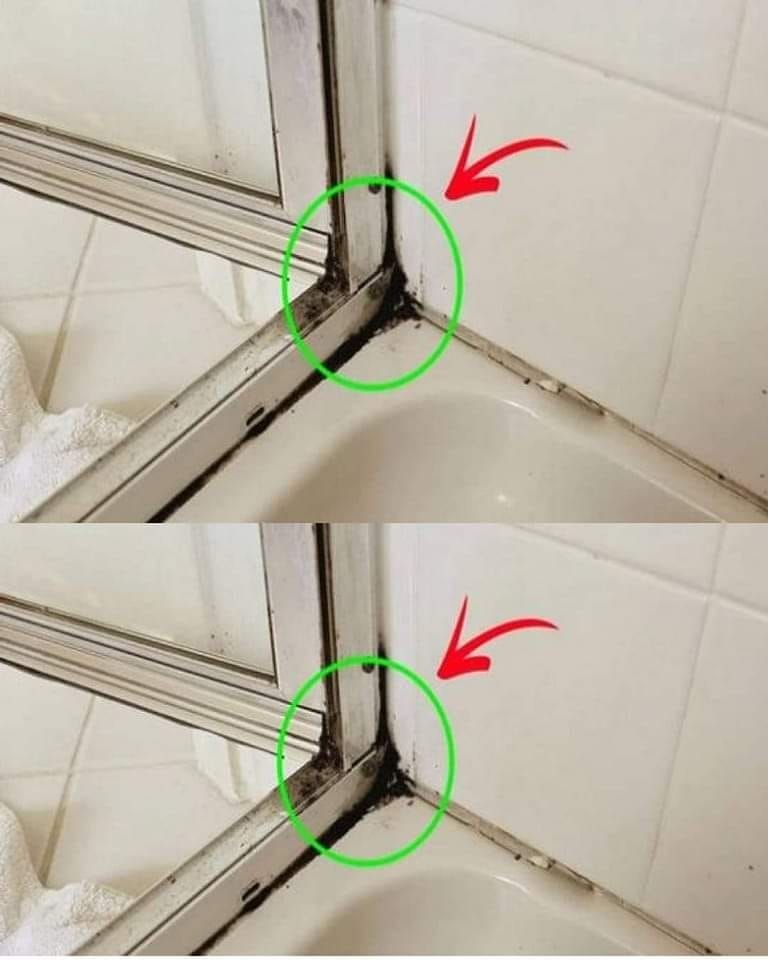ADVERTISEMENT
*Method:*
– **Preparation:** Pour undiluted white vinegar into a spray bottle.
– **Application:** Spray the affected silicone areas generously, ensuring complete coverage.
– **Waiting Period:** Allow the vinegar to sit for at least 30 minutes to penetrate and kill the mildew.
– **Scrubbing:** Using an old toothbrush, gently scrub the silicone to dislodge any remaining mildew.
– **Rinsing:** Rinse the area thoroughly with warm water and wipe dry with a clean cloth.
*Note:* For persistent mildew, apply the vinegar solution, let it sit for an hour, then scrub and rinse as described. citeturn0search1
**2. Baking Soda and Bleach Paste**
Combining baking soda’s abrasiveness with bleach’s disinfectant properties creates a potent mildew-removing paste.
*Method:*
– **Preparation:** Mix one cup of chlorine bleach with half a cup of baking soda in a bowl until a lump-free paste forms.
– **Application:** Apply the paste directly onto the mildew-affected silicone areas.
– **Waiting Period:** Let the paste sit for 2-3 hours to allow it to penetrate and eliminate the mildew.
– **Cleaning:** After the waiting period, scrub the area with a brush, then rinse thoroughly with water.
*Note:* Always ensure the bathroom is well-ventilated when using bleach, and wear protective gloves to prevent skin irritation. citeturn0search0
**3. Hydrogen Peroxide Treatment**
Hydrogen peroxide is a strong oxidizer with antifungal properties, effective in killing mildew.
*Method:*
– **Application:** Pour 3% hydrogen peroxide into a spray bottle.
– **Spraying:** Spray the affected silicone areas generously.
– **Waiting Period:** Allow it to sit for 10-15 minutes to effectively kill the mildew.
– **Scrubbing:** Use a small brush, such as an old toothbrush, to scrub the silicone gently.
– **Rinsing:** Rinse the area thoroughly with warm water and dry with a clean cloth.
*Note:* Ensure the area is well-ventilated during this process. citeturn0search6
**4. Commercial Mold Removers**
For persistent mildew, commercial mold removers can be effective.
*Method:*
– **Application:** Purchase a mold remover suitable for bathroom use, such as HG Mould Remover.
– **Spraying:** Follow the product’s instructions, typically spraying the affected area and allowing it to sit for a specified time.
– **Cleaning:** After the recommended time, wipe the area clean with a cloth.
*Note:* Always follow the manufacturer’s instructions and ensure proper ventilation when using chemical cleaners. citeturn0news15
**Preventing Future Mildew Growth**
To minimize the recurrence of mildew on shower silicone, consider the following preventive measures:
– **Enhance Ventilation:** Use exhaust fans during and after showers to reduce humidity levels.
– **Regular Cleaning:** Clean the shower area regularly using appropriate cleaners to prevent mildew buildup.
– **Dry Surfaces:** After each use, wipe down the shower walls and silicone seals with a dry cloth to remove excess moisture.
– **Repair Leaks Promptly:** Address any leaks in the shower or surrounding areas to prevent water accumulation.
– **Use Mold-Resistant Products:** Consider using mold-resistant sealants and paints in your bathroom to deter mildew growth.
By implementing these cleaning methods and preventive strategies, you can effectively eliminate existing mildew and reduce the likelihood of future growth, ensuring a clean and healthy shower environment.
